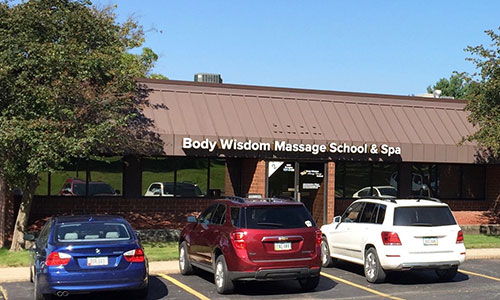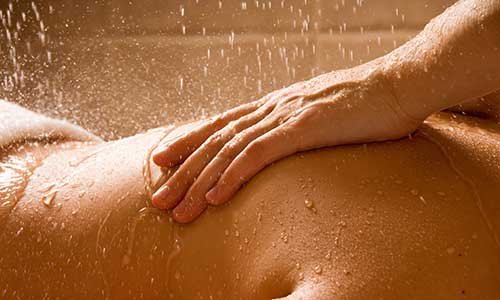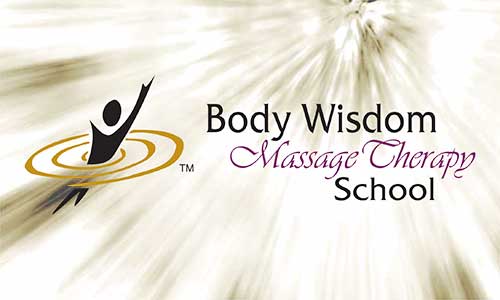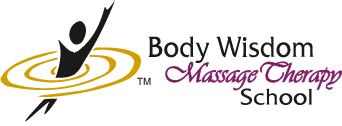Craniosacral Therapy (CST) Level 1 (24 hours)
Craniosacral Therapy is a gentle touch, energetic, and holistic modality addressing the whole person and their overall health and wellness.
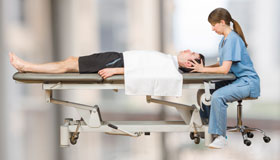
The body’s craniosacral system consists of the dura mater membrane that encases the brain, travels out the foramen magnum, which is the opening at the base of the skull, and further surrounds the spinal cord, and secures the sacrum. Its production and re-absorption of spinal fluid causes a subtle internal-external rotation of all paired bones, creating a pulse separate from heart rate and respiration. The rhythm of this subtle movement can be palpated through out the entire body.
Affecting nearly every aspect of the central nervous system, balancing the craniosacral system achieves profound relaxation and provides a deep sense of wellbeing.
This course addresses how Craniosacral Therapy benefits both passive and active aspects of the person and positively influences every aspect of the client’s life:
- Reduced flight or fight override through enhanced balance of the nervous system
- Improved function of the central nervous system aiding all other body systems
- Increased somatic awareness and overall relaxation
- Enhanced relation of musculoskeletal and nervous system for better functionality
- Enabling greater ROM (range of motion), mobility and strength for activity
- Support of trauma and PTSD recovery and optimized self-regulation
- Physical and emotional pain management
- Enabled auto-immune functions
The course teaches gentle techniques to facilitate balance in the craniosacral system, allowing for the body to heal itself. You will learn a light-pressure approach, and how to detect, and follow the lead of your client’s body. This non-invasive modality invites the body to naturally unwind, and unravel long held dysfunctions, and restrictions resulting in stress reduction, improved immune response, and increased well-being.
Course objectives are, for participants to:
- conclusively explain what Craniosacral Therapy is, describe its benefits, and how it can relieve pain, and impact dysfunctions;
- demonstrate palpation skills for the unique CST pulse;
- indentify subtle signs of dysfunction as well as improvements via the patterns of the craniosacral rhythm;
- recognize the signs and symptoms of the fascial system, that web of tissue in contact with every body structure, to localize physical ailments;
- free up movement along the drual tube (craniosacral system) to improve the central nervous system’s bodily interactions;
- work with ailments such as TMJ, head & neck pain, and more;
- develop a simple protocol that can immediately be utilized in your practice.
This 24-hour course includes a professional textbook and handouts with detailed information and useful images. All techniques taught are in alignment with John Upledger’s methods, who developed Craniosacral Therapy in the 1970’s as an offshoot of William Garner Sutherland’s Cranial Osteopathy from the 1930’s.
Prerequisites: By permission
Craniosacral Therapy (CST) Level 2 (24 hours)
Craniosacral Therapy is a gentle technique manipulating the connective tissue surrounding the brain and spinal cord. This energetic and holistic modality addresses the whole person and their overall health and wellness.
The body’s craniosacral system consists of the dura mater membrane that encases the brain, travels out the foramen magnum, which is the opening at the base of the skull, and further surrounds the spinal cord, and secures at the sacrum. Its production and re-absorption of spinal fluid causes a subtle internal-external rotation of all paired bones, creating a pulse separate from heart rate and respiration. The rhythm of this subtle movement can be palpated throughout the entire body.
Affecting nearly every aspect of the central nervous system, balancing the craniosacral system achieves profound relaxation and provides a deep sense of wellbeing.
This level begins with a Review of the principals of the 10-Step Craniosacral Therapy Protocol and then delves deeper into:
- Sphenoid release - on all axis of motion, and
- Release of the hard palate; as well as
- Whole body evaluation, including
- SomatoEmotional release, and its
- Impact of the deeper releases and structural benefits to the whole-body techniques.
As with CST Level 1, the central focus lies in benefitting both passive and active aspects of the person and positively influencing every aspect of the client’s life:
- Reduced flight or fight override through enhanced balance of the nervous system
- Improved function of the central nervous system aiding all other body systems
- Increased somatic awareness and overall relaxation
- Enhanced relation of musculoskeletal and nervous system for better functionality
- Enabling greater ROM (range of motion), mobility and strength for activity
- Support of trauma and PTSD recovery and optimized self-regulation
- Physical and emotional pain management
- Enabled auto-immune functions
This level as well, teaches gentle techniques to facilitate balance in the craniosacral system, allowing for the body to heal itself. You will continue learning light-pressure approach, and how to detect, and follow the lead of your client’s body. This non-invasive modality invites the body to naturally unwind, and unravel long held dysfunctions and restrictions resulting in stress reduction, improved immune response, and increased well-being.
This 24-hour Level 2 course continues to utilize the professional textbook from the prior course level and provides additional handouts with detailed information and useful images. All techniques taught are in alignment with John Upledger’s methods, who developed Craniosacral Therapy in the 1970’s as an offshoot of William Garner Sutherland’s original Cranial Osteopathy from the 1930’s.
Course objectives are, for participants to:
At the completion of the course, students will have a much deeper understanding and knowledge base to:
- Conclusively explain the Craniosacral Therapy modality, list its benefits, and describe how it can relieve pain and impact dysfunctions;
- Utilize fine-tuned palpation skills for the cranial fluid pulse for targeted assessment and releases;
- Strategically follow the subtle signs of dysfunction and improvements via the patterns of the craniosacral rhythm;
- Apply arcing for active restrictions;
- Practice fascial gliding to evaluate fascial mobility to determine problem resolution or discover inactive restrictions;
- Evaluate general vitality to assess communication and resolution of problem area;
- Include SomatoEmotional impacts of deeper releases and structural benefits to whole body techniques
This 24-hour course includes a professional textbook and handouts with detailed information and useful images. All techniques taught are in alignment with John Upledger’s methods, who developed Craniosacral Therapy in the 1970’s as an offshoot of William Garner Sutherland’s Cranial Osteopathy from the 1930’s.
Prerequisites: Craniosacral Therapy - Level 1
96 –Hour Courses
48 – Hour Courses
- Deep Tissue Massage (48 hrs)
- Myofascial Release Technique (48 hrs)
- Positional Release (48 hrs)
- Hot & Cold Stone Therapy (48 hrs)
- Acupressure (48 hrs)
- Foot Reflexology (48 hrs)
- Lymphatic Drainage Massage (48 hrs)
- Clinical Aromatherapy & Massage (48 hrs)
- Maternity & Infant Massage (48 hrs)
32 – Hour Courses
24 – Hour Courses
- Craniosacral Therapy (CST) Level 1 (24 hrs)
- Craniosacral Therapy (CST) Level 2 (24 hrs)
- Neuro-Muscular Massage (24 hrs)
- SansHands Flow™ (24 hrs)
- Bamboo Massage (24 hrs)
- Clinical Hydrotherapy (24 hrs)
- Thai on the Table (24 hrs)
- Hot Stone LomiLomi (24 hrs)
- European Spa Specialties (24 hrs)
- Thai Foot Reflexology (24 hrs)
16 – Hour Courses
- IASTM: Instrument Assisted Soft Tissue Mobilization (16 hrs)
- Fusion 16 - "Best of BWS” Collection (16 hrs)
- Rock to Relax: Pulsing (16 hrs)
- Rock to Relax: Rebalancing (16 hrs)
- Thai Herbal Spa (16 hrs)
- Premier Spa: Indonesia (16 hrs)
- Sea Shell Massage (16 hrs)
- Ayurvedic Shirodhara (16 hrs)
- Hot Stone Reflexology (16 hrs)
- Sound Infused Massage Therapies (16 hrs)
- Oncology & Critical Care Massage (16 hrs)
- Geriatric (Elderly) Massage (16 hrs)
- Hospice (Palliative Care) Massage (16 hrs)
- Reiki Intensive (16 hrs)
- Reiki Master Course (16 Hours)
8 – Hour Courses
- Your Crown & Glory - Head Massage (8 hrs)
- Dreamy Face Sequence (8 hrs)
- Crazy Good Neckwork - Version I (8 hrs each)
- Crazy Good Neckwork - Version II (8 hrs each)
- Ease the Load – Shoulder Work (8 hrs)
- Embracing Life – Arms, Wrists & Hands (8 hrs)
- Soothing Belly Work - Abdominal Sequence (8 hrs)
- I’ve Got Your Back - Special Back Techniques (8 hrs)
- Move Freely - Pelvis/Hips (8 hrs)
- Stand Your Ground - Legs/Feet (8 hrs)
- Relax - Ear & Hand Reflexology (8 hrs)
- Intuitive Hands-On Energy Work (8 hrs)
- Himalayan Salt Stone Massage (8 hrs)
- Stretching - Tai Chi - Qigong: Lower Body (8 hrs)
- Stretching - Tai Chi - Qigong: Upper Body (8 hrs)
- Cupping: Myofascial Decompression (8 hrs)
- Crystal Radiance: Massage with Gemstones (8 hrs)
- Death Doula Certification (8 hrs)
- Business Ethics, Law and Communication (6 hrs)
- Event, Promotional, and Corporate Chair Massage (8 or 12 hrs)

